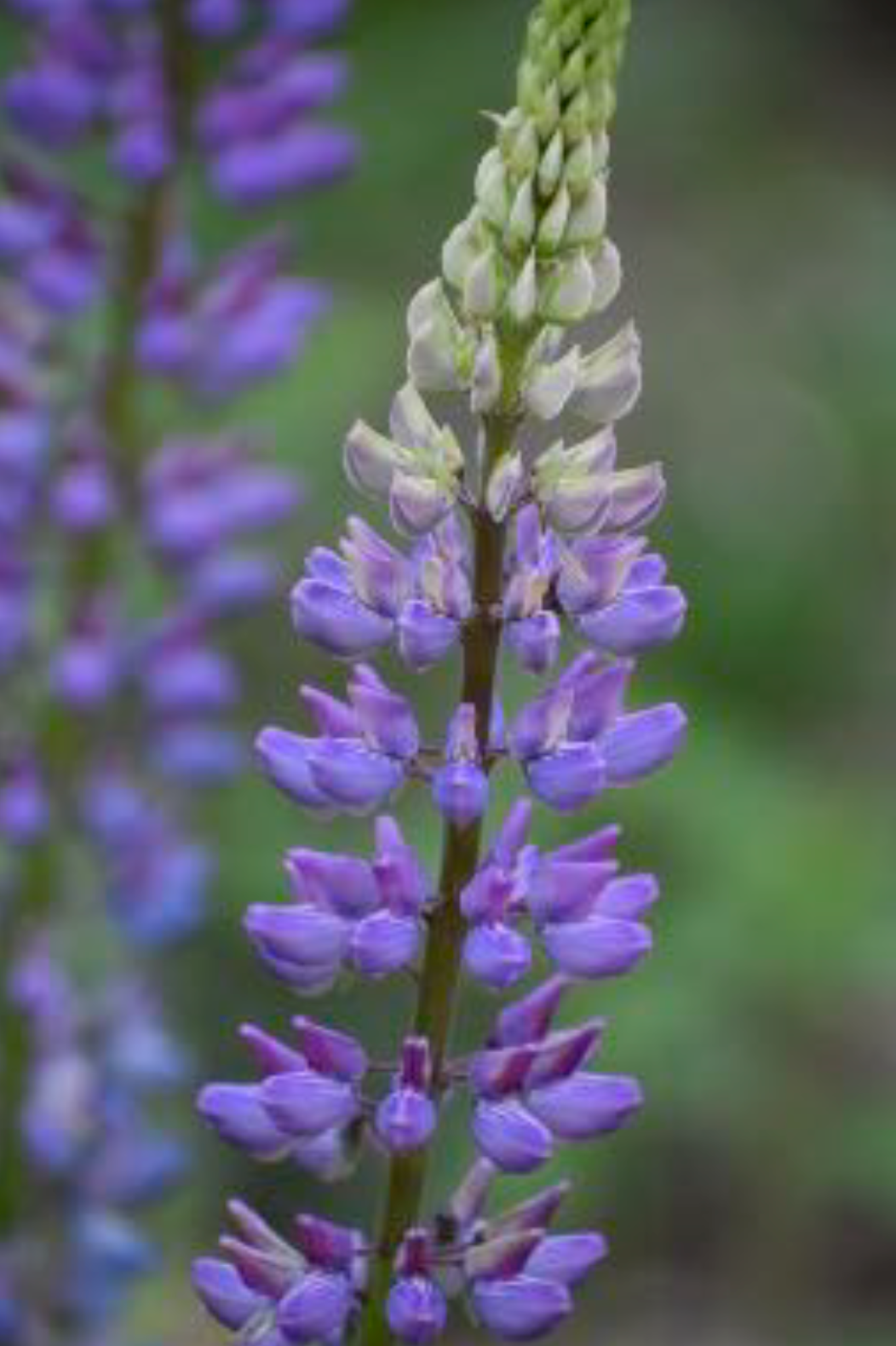Lupinus perennis - Wild Lupine
Lupinus perennis, commonly known as Wild Lupine, is a rare native perennial that thrives in dry, sandy, or well-drained soils under full sun. This native plant is known for its striking spikes of blue to purple pea-like flowers that bloom in late spring to early summer. It is an excellent choice for naturalizing dry, sunny areas such as dry hillsides, and well drained,sandy gardens.
Wild Lupine is particularly significant for its role in supporting wildlife. It is the host plant for the larvae of several butterfly species, most notably the endangered Karner Blue Butterfly, whose caterpillars feed exclusively on Wild Lupine leaves. By planting Lupinus perennis, gardeners can help support populations of this and other native butterfly species, contributing to important conservation efforts.
It's important to distinguish Lupinus perennis, the native Wild Lupine of the Northeast, from Lupinus polyphyllus, the native lupine of California.
Lupinus perennis is a more delicate perennial that thrives in dry, sandy, or well-drained soils with full sun, typically reaching heights of 1 to 2 feet.
In contrast, Lupinus polyphyllus—commonly known as the Bigleaf Lupine—is native to the West Coast, particularly California. This species tends to grow much taller, often reaching 3 to 5 feet or more. It is more aggressive and can spread rapidly, potentially outcompeting other native plants.
When planting lupines, it's essential to choose the right species for your region to ensure that you are supporting local ecosystems without introducing overly competitive species that may disrupt the balance.
Host Plant for: Karner Blue Butterfly, Wild Indigo Butterfly, Duskywing Butterfly, Orange Sulphur Butterfly!
approximately 30 seeds
Couldn't load pickup availability



